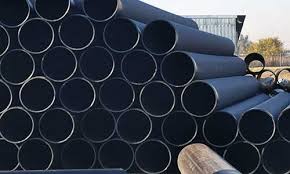Nov . 26, 2024 04:32 Back to list
hdpe duct coupler products
Understanding HDPE Duct Couplers A Comprehensive Guide
High-Density Polyethylene (HDPE) duct couplers are essential components in modern infrastructure, particularly within the telecommunications and utility sectors. These couplers play a crucial role in ensuring the seamless connection of HDPE duct systems, which are widely used for various applications, including cable installation, water management, and drainage systems. In this article, we will delve into the significance, types, and benefits of HDPE duct couplers, as well as best practices for their use.
What is HDPE?
Before we explore duct couplers, it’s vital to understand HDPE. High-Density Polyethylene is a versatile plastic known for its high strength-to-density ratio. It is widely used in the manufacturing of pipes and ducts due to its resistance to impact, chemicals, and UV radiation. HDPE’s durability and flexibility make it an ideal choice for applications that require longevity and resilience against harsh environmental conditions.
The Role of Duct Couplers
Duct couplers serve as connectors between two lengths of HDPE duct, allowing for easy extension of duct systems without compromising integrity. They are designed to provide a secure, airtight Joint, preventing leaks and ensuring that whatever is being transported—be it data cables, water, or other utilities—remains within the system efficiently.
The need for HDPE duct couplers arises from various installation requirements. Often, ducts need to navigate around structures, change direction, or cover distances that exceed the standard lengths available. Couplers facilitate these modifications seamlessly, making them a staple in installation projects.
Types of HDPE Duct Couplers
HDPE duct couplers come in several varieties, each suited to different applications
1. Standard Couplers These are employed for most standard connections, providing a basic link between two duct sections.
2. Reducing Couplers Used when transitioning between ducts of differing diameters, these couplers ensure a secure fit and prevent any potential bottlenecks in the system.
3. End Caps While not couplers in the traditional sense, end caps are often used in conjunction with duct couplers to seal the ends of the duct systems, providing added protection against environmental factors.
hdpe duct coupler products

4. Elbow Couplers These allow for directional changes in the ducting without compromising the system's integrity. They are particularly useful in complex installations where space may be limited.
Benefits of Using HDPE Duct Couplers
1. Durability HDPE duct couplers are resistant to corrosion, which extends the lifespan of the duct system. This durability is particularly important in outdoor applications exposed to the elements.
2. Flexibility The flexibility of HDPE allows for ease of installation, making it simpler to adapt to various job site conditions without requiring extensive modifications.
3. Cost-Effective Utilizing HDPE duct couplers can reduce installation time and labor costs, making them a cost-effective choice for contractors and utility providers.
4. Environmental Safety HDPE is an environmentally friendly option, being recyclable and free from harmful additives. This makes it a suitable choice for sustainability-conscious projects.
Best Practices for Installation
For optimal performance and longevity of HDPE duct couplers, adhering to best practices during installation is crucial. Here are some tips
- Clean Surfaces Ensure that both ends of the ducts are clean and free of debris before attaching the coupler. - Proper Alignment Align the ducts correctly to prevent stress on the coupler, which could lead to premature failure. - Follow Manufacturer Guidelines Different couplers may have specific requirements regarding installation techniques and tools. Always refer to the manufacturer’s instructions. - Regular Inspections Conduct regular inspections of the coupler assembly as part of routine maintenance. This helps identify any potential issues before they escalate.
Conclusion
HDPE duct couplers are indispensable tools in the installation and maintenance of duct systems across various industries. Their ability to provide secure, efficient connections while standing up to harsh conditions makes them a preferred choice among professionals. By understanding the types, advantages, and best practices associated with these couplers, contractors and users alike can ensure the reliability and efficiency of their duct systems for years to come. For anyone involved in infrastructure projects, investing in quality HDPE duct couplers is a step toward enduring success.
-
High-Quality PVC Borehole Pipes Durable & Versatile Pipe Solutions
NewsJul.08,2025
-
High-Quality PVC Perforated Pipes for Efficient Drainage Leading Manufacturers & Factories
NewsJul.08,2025
-
High-Quality PVC Borehole Pipes Durable Pipe Solutions by Leading Manufacturer
NewsJul.08,2025
-
High-Quality PVC Borehole Pipes Reliable PVC Pipe Manufacturer Solutions
NewsJul.07,2025
-
High-Quality UPVC Drain Pipes Durable HDPE & Drain Pipe Solutions
NewsJul.07,2025
-
High-Quality Conduit Pipes & HDPE Conduit Fittings Manufacturer Reliable Factory Supply
NewsJul.06,2025

